 le 13 au 16 mars 2023
le 13 au 16 mars 2023
Upcoming Dates
- March 13-20: Read-athon. Bring in donations and reading logs!
- Tuesday, March 14: Field Trip to Hult Center for a music event. All forms are turned in. Bravo!
- Friday, March 17: NO SCHOOL
- Monday-Friday, March 27-April 3: NO SCHOOL, Spring Break!
Read-a-thon pledge packets accepted now!
This important PTO school-wide fundraiser, Read-a-thon, helps bring our invaluable French Interns to campus.
Your student(s) brought home pledge packets* last week. On the back, they should have tracked the minutes they spent reading.
-
Reading Log/ Envelope Return Window is this week, March 13th – March 20th
-
If your family chooses to collect donations, please bring the collected money with completed logs this week. The PTO will provide a celebration for the class with the highest participation of students turning in reading logs. Contact Emily at ec_steel@yahoo.com with any questions.
What’s up! Quoi de neuf?
 Please send your child to school in proper footwear and a water-repellent jacket when the weather is threatening. Students will go out to recess unless the principal decides the weather prevents it. If your child is ill, or has had a fever or vomited within the previous 24 hours, please keep your child home. Please continue to follow current Covid rules as well. If your child will be absent, please email both teachers (kincaid_j@4j.lane.edu and hopper_s@4j.lane.edu) and please call in and leave a message on the school line (541) 790-7080 or for our secretary, Eliza Drummond, at drummond_e@4j.lane.edu.
Please send your child to school in proper footwear and a water-repellent jacket when the weather is threatening. Students will go out to recess unless the principal decides the weather prevents it. If your child is ill, or has had a fever or vomited within the previous 24 hours, please keep your child home. Please continue to follow current Covid rules as well. If your child will be absent, please email both teachers (kincaid_j@4j.lane.edu and hopper_s@4j.lane.edu) and please call in and leave a message on the school line (541) 790-7080 or for our secretary, Eliza Drummond, at drummond_e@4j.lane.edu.
Le français:

•We speak exclusively in French during French class.
•We write in complete sentences and can identify many parts of speech.
•We are learning about symmetry and about telling time in French.
This past week, we explored line/bilateral symmetry (la symétrie bilatérale) and radial/rotational symmetry (la symétrie rotative), first in nature, then in maths. We also began a mini art project creating an example of rotational symmetry with an octagon and using rulers to draw precise, straight lines. Many students still do need practice working on using rulers with precision not only in measuring, but also in understanding how to hold the ruler down with one hand and draw a precise line with the other. Many also still need practice cutting accurately with scissors, so feel free to work on projects at home that use rulers and scissors. Demonstrating good cutting with scissors is also useful.
 We are also well into our latest art project, Le vitrail (Stained glass window) which involves reflection symmetry and limited rotational symmetry. Most students have begun their final copy, and a few lucky students with short names are on their third one!
We are also well into our latest art project, Le vitrail (Stained glass window) which involves reflection symmetry and limited rotational symmetry. Most students have begun their final copy, and a few lucky students with short names are on their third one!
We will begin telling time in French, using the French format, this week and will work on it over the next two weeks. In French, for example, 2:00 pm would be expressed as either 2h00 (two hours/deux heures) or 14h00 (14 hours/quatorze heures).
Last week’s French vocabulary quiz will come home on Tuesday or Wednesday. The highest possible score is 25/22, which is 114%. The average score was 103%, so if your child did dramatically worse, please help him/her study harder/better. Merci!
Sciences sociales (Social studies):
We will begin talking about our big spring social studies project in the upcoming two weeks. Each student will be randomly assigned a Francophone (French-speaking) country, will learn all about the country, will create a dodecahedron about the country, and will present the country to the rest of the class. These are a few of the works from last year’s students. It is an all-consuming project but always stimulating.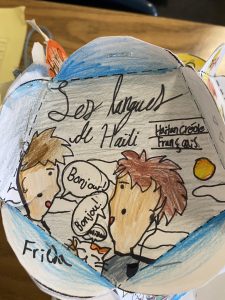
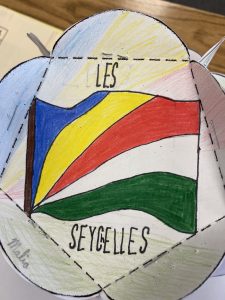


Les sciences:
We did our first large science experiment this week, first creating a circuit with a switch in science groups, then using it to test a bag full of small objects to determine which materials conduct electricity, so are conductors (les conducteurs), and which materials inhibit conduction, so are insulators (les isolants). We confirmed that all the metal objects conducted electricity. We have discussed and will continue to discuss circuits, open and closed, and insulators and conductors of electricity in the coming weeks.
First-grade Buddies:
Blue class has buddies every other week with Mme Wolf’s students, and red class has buddies every other week with Mme Roadman’s students. The students love it! Here are a few fun photos: 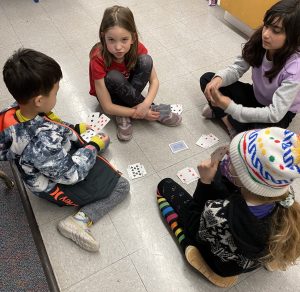


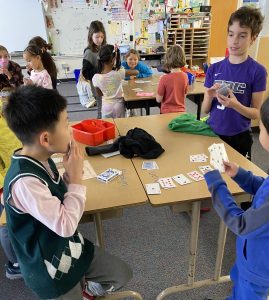

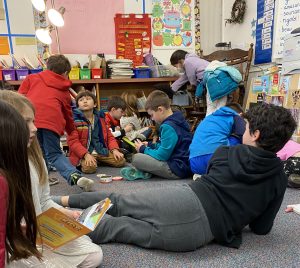
And a few more photos of this past week’s drumming:
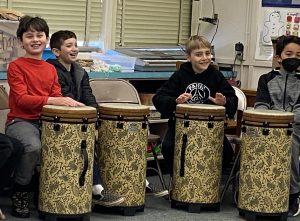
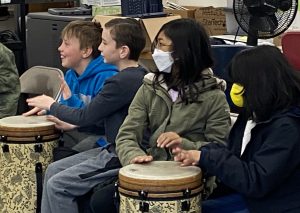

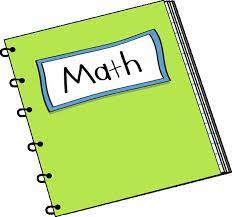

Mme Shelli, English & Math
hopper_s@4j.lane.edu
Math
We will be working on Unit 8: Solving Problems with Multiplicative Comparison. Students will model multiplicative stories with a bar model similar to this one. Modeling enables students to visualize what is happening in a problem, so they can determine if they will multiply and/ or divide to solve.Here’s a few starter problems we will discuss. Notice how the stories have the same numbers, but have different meanings? Modeling these on a bar model can help students see the relationship of 4, 6, and 24 in each story.
- Alexa has six points. Oliver earned four times as many points as Alexa. How many points did Oliver score? How could you model this?
- Oliver has 24 points, and Alexa earned only six. How many times as many points did Oliver score compared to Alexa?
- Oliver has 24 points. He earned four times as many points as Alexa. How many points did Alexa score?
As part of this unit, we’ll be discussion strategies of division. One key strategy we use in 4th grade is partial quotient division. This strategy relates multiplication to division. Check out this link for a quick guide to this method which is probably different than how you learned division in school.
Homework: students will bring home writing to share with you for homework this week. Please sign the form to show that your received the work. You may keep the writing. Also, look for your child’s recent math work in their home folders.
English
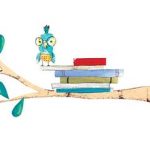 Literature & Writing
Literature & Writing
Please look for your child’s survival narrative to come home on Monday. Their homework is to share their edited draft and final draft of a survival narrative they wrote as we read the novel, Hatchet. The first draft has many mark-ups that reflect what they and peers found to edit. It also includes some suggestions from me for edits and revisions in a few paragraphs. Please understand, that their final draft is NOT free of errors, but reflects a lot of hard work on your child’s part. Please celebrate their narratives with them this week.
Goals for this assignment were to develop a narrative that follows a plot line. In the first few paragraphs, students set a context for a survival story. Their main character should encounter a few obstacles before being rescued. For many students this was their first multi-paragraph story. As a class, we worked on how to punctuate complete sentences and dialog and to create paragraphs. Students were to include descriptive, sensory details and though-shots (characters’ inner dialog) to create an interesting fiction story. They students have really enjoyed writing these. I hope you will join me in celebrating their hard work.
This week:
WordStudy: suffix endings (-ed & -ing) & how they can change a base word
Reading/ Writing: We will listen to excerpts from the book River, the sequel to Hatchet by Gary Paulsen. Students will discuss the pros and cons of having the main character return to the wild. This will bridge us into our next 3-4 week unit on persuasive writing. Students will be analyzing various short persuasive essays, choosing topics important the them, and then writing organized essays to support their opinions.

Write a Comment
You must be logged in to post a comment.